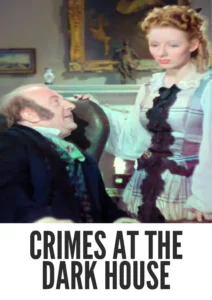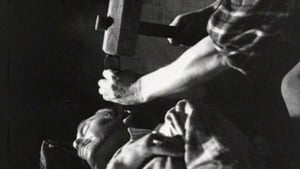Video Sources 0 Views
- Crimes at the Dark House 1940 Colorized


Synopsis
Table of Contents
ToggleMurder and Mystery: Crimes at the Dark House (1940) in Stunning Color

Enter a world of suspense with Crimes at the Dark House, a gripping horror mystery from 1940, now beautifully colorized for a captivating viewing experience. This film, also known as The Frightened Lady, delivers a thrilling blend of mystery, and suspense within the confines of a mansion. Perfect for classic film enthusiasts, this HD download brings a chilling piece of cinematic history to your screen.
Crimes at the Dark House Storyline: A Web of Intrigue
Crimes at the Dark House tells the story of a series of murders that occur at the ancestral home of the wealthy Lebanon family. The family is plagued by a dark secret and a mysterious killer who seems to be targeting them one by one.As the body count rises, a determined detective arrives to unravel the mystery and expose the culprit. The investigation leads to a web of hidden identities, secret affairs, and long-buried resentments, creating an atmosphere of suspicion and paranoia. The film culminates in a shocking revelation as the killer’s identity is finally revealed, bringing a suspenseful climax to this classic thriller. Ultimately, Crimes at the Dark House is a suspenseful mystery that offers a glimpse into a world of shadows, secrets, and deception.
Movie Cast
The film features a talented cast of actors who bring this suspenseful story to life:
- George Zucco as Dr. Paul Marchant
- Noel Madison as Dwight Severn
- Jan Clayton as Margaret Lebanon
- Walter Kingsford as Insp. Routledge
- Joan Brodel as Nan
Movie Genre
Crimes at the Dark House falls into the genre of gothic horror mystery, with elements of suspense that are characteristic of the era. Its intricate plot and atmospheric setting make it a captivating and engaging film.
Historical Context: The Shadowy World of Classic Horror
Released in 1940, Crimes at the Dark House, originally titled The Frightened Lady, showcases classic horror themes, visual storytelling, and character development. The film was produced during a period when classic horror cinema was captivating audiences with tales of mystery and intrigue. Crimes at the Dark House offers valuable insights into classic cinematic traditions, solidifying its place in film history.
Colorization Details
This colorized version of Crimes at the Dark House has been meticulously restored using modern digital techniques, enhancing the visual appeal while preserving the film’s original atmosphere of mystery and suspense. The colorization process involved carefully analyzing the grayscale tones of the original black and white footage and assigning appropriate colors to each scene. While the specific software used remains proprietary, the techniques employed included advanced algorithms for color palette selection and image enhancement. This painstaking process brings new life to the characters and settings, making the story even more engaging for modern audiences. While some may debate the merits of colorizing classic films, it introduces these films to a broader audience, ensuring their legacy for future generations.
Technical Details
- Director: George King
- Screenplay: Edward Dryhurst, A. Rawlinson
- Based on: the play by Maurice Level
- Cinematography: Bryan Langley
- Edited by: Charles Saunders
- Production Company: Associated British Picture Corporation
- Distributed by: Monogram Pictures
- Runtime: 65 minutes
Technical Specifications
- Download Format: MP4
- Resolution: HD (1080p)
- Compatibility: Compatible with most devices, including smartphones, tablets, computers, and smart TVs.
Reviews and Critical Reception
Crimes at the Dark House (1940), also known as The Frightened Lady, offers glimpses of classic themes. It remains a fascinating and entertaining example of cinema and a valuable piece for enthusiasts. As an intriguing film, Crimes at the Dark House provides a unique perspective.
FAQs
- Q: What is Crimes at the Dark House about?
- A: Crimes at the Dark House is a mystery thriller about a series of murders that occur at the ancestral home of a wealthy family.
- Q: Is Crimes at the Dark House (1940) a well-known film?
- A: Crimes at the Dark House, or The Frightened Lady, offers a glimpse into classic style and themes.
- Q: Is this version of Crimes at the Dark House colorized?
- A: Yes, this version has been professionally colorized to enhance the viewing experience.
- Q: What makes Crimes at the Dark House interesting for fans?
- A: Crimes at the Dark House offers valuable insights, showcasing classic skills.
- Q: What is the download format?
- A: The download format is MP4, which is compatible with most devices.
- Q: What resolution is the download?
- A: The resolution is HD (1080p), providing a high-quality viewing experience.
Download Now in HD!
Watch Crimes at the Dark House Today!







